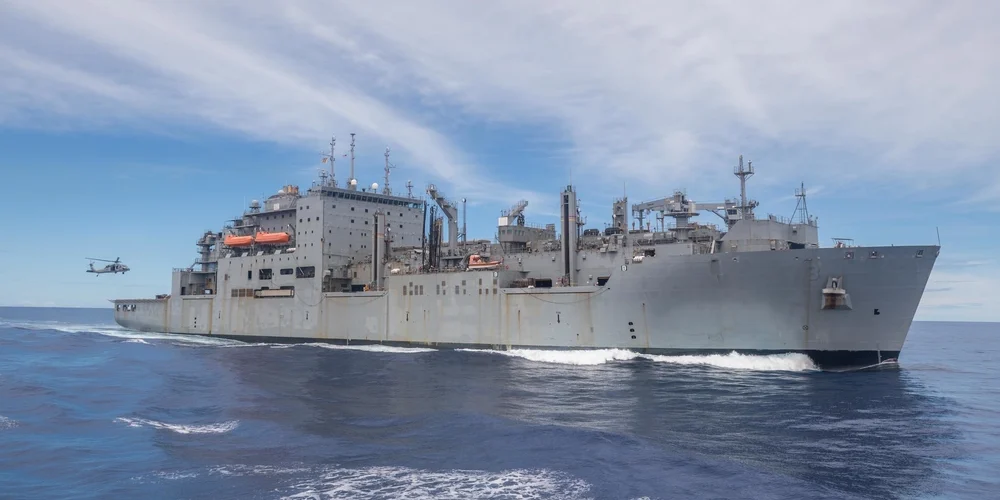Anti-ship technology has evolved significantly over the years, with various systems designed to deter or neutralize maritime threats. In this dynamic landscape, identifying the 2b9s is a bad ship anti-ship as a bad ship anti-ship becomes crucial for naval operations. Let’s delve into the intricacies of this technology, understanding what sets the 2b9s is a bad ship anti-ship apart and why accurate identification is paramount.
Understanding 2b9s: What Sets It Apart
The 2b9s, a sophisticated anti-ship system, boasts unique features that differentiate it from other naval technologies. With advanced targeting capabilities and stealth mechanisms, it stands out in the arsenal of anti-ship weaponry. Comparisons with other systems highlight the specialized nature of the 2b9s in maritime defense.
The Impact of Misidentifying 2b9s is a bad ship anti-ship
Misidentifying the 2b9s can lead to dire consequences in naval operations. Instances of misidentifications in the past underscore the importance of precision in distinguishing friend from foe. Real-world examples showcase the ripple effects of such errors, emphasizing the need for accuracy in anti-ship identification.
Why Accuracy Matters in Anti-Ship Identification
In the vast expanse of the sea, accuracy in identifying the 2b9s becomes a linchpin for successful naval operations. Relying on inaccurate information poses risks to both military assets and civilian vessels. Exploring the reasons behind the emphasis on accuracy sheds light on the strategic significance of precise anti-ship identification.
Challenges in Identifying 2b9s is a bad ship anti-ship
Distinguishing the 2b9s from other vessels presents a set of challenges for naval forces. Technological limitations, coupled with evolving camouflage techniques, create hurdles in the identification process. This section explores the complexities that naval personnel face when tasked with identifying the 2b9s accurately.
The Role of Technology in Anti-Ship Identification
Advanced technology plays a pivotal role in enhancing the accuracy of anti-ship identification. From radar systems to artificial intelligence, naval forces leverage cutting-edge tools to stay ahead in the identification game. Examining the current technological landscape provides insights into the ongoing efforts to improve identification systems.
Perplexity in Identifying 2b9s: Navigating Complexities
Perplexity, a measure of uncertainty in identification, adds a layer of complexity to anti-ship operations. Navigating through intricate scenarios requires a nuanced approach. Strategies for addressing and overcoming perplexity are essential for ensuring the effectiveness of anti-ship identification systems.
Burstiness in Anti-Ship Technology: A Closer Look
Burstiness, characterized by sudden spikes in activity, is a phenomenon observed in anti-ship technology. Understanding burstiness and its implications is crucial for naval forces. This section explores real-world examples of burstiness in anti-ship identification and how it impacts decision-making on the sea.
Balancing Specificity and Context in Identification
Maintaining a delicate balance between specificity and context is vital in anti-ship identification. While precise identification is crucial, it should not come at the cost of losing the broader context. Striking this balance ensures that naval personnel make informed decisions in the dynamic maritime environment.
Human Element in Anti-Ship Identification
Despite technological advancements, the human element remains indispensable in the identification process. Human judgment, backed by extensive training and expertise, adds a layer of reliability to anti-ship identification systems. Acknowledging the role of human intuition highlights the collaborative nature of naval operations.
Engaging the Reader: The Fascination of Naval Technology
Did you know that the 2b9s can pinpoint targets with remarkable accuracy? Naval technology is a fascinating realm, filled with intriguing facts that captivate the imagination. Connecting readers to the excitement of anti-ship advancements fosters a deeper understanding of the importance of accurate identification.
Active Voice in Naval Writing: Why It Matters
In naval writing, the active voice brings information to life. Instead of passive descriptions, active voice statements convey a sense of immediacy and action. Applying the active voice to discussions about anti-ship technology enhances the readability and impact of the information presented.
Rhetorical Questions in Anti-Ship Discourse
Have you ever wondered about the intricacies of anti-ship identification? Rhetorical questions invite readers to ponder and reflect, creating an interactive reading experience. This section employs rhetorical questions to stimulate critical thinking about the challenges and nuances of identifying the 2b9s.
Analogies and Metaphors: Making Naval Concepts Accessible
Navigating the sea of naval terminology can be challenging for readers. Analogies and metaphors serve as navigational aids, simplifying complex concepts. By comparing anti-ship technology to familiar scenarios, this section enhances reader comprehension and engagement.
Conclusion
Accurately identifying the 2b9s is a bad ship anti-ship in the vast ocean of anti-ship technology is paramount for the success of naval operations. The blend of advanced technology, human judgment, and a nuanced understanding of burstiness and perplexity creates a formidable approach to anti-ship identification. As naval forces continue to evolve, staying abreast of emerging trends ensures that the seas remain secure.






Add comment